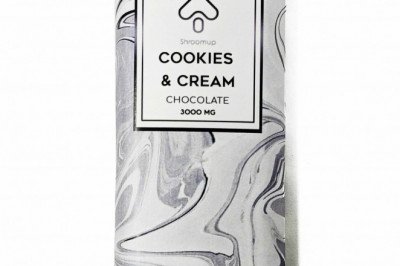views
Foundry parts and forging parts are both manufacturing processes used to process metal materials. The difference is that forged parts are hammered and pressed to make the metal material in a plastic state into a workpiece with a certain shape and size. Change its physical properties; and foundry parts are a method of processing the required shape of foundries after melting the metal into a liquid and then pouring it into a mold, cooling, solidifying, and cleaning, and can be made into various objects with complex shapes.
So let's take a look at the specific differences between cast parts and forged parts?
1. Foundry parts:
Foundry parts are a kind of metal thermal processing technology that mankind has mastered earlier, with a history of about 6000 years. The cost of the blank produced by foundry parts is low, and for parts with complex shapes, especially with complicated internal cavities, it can show its economic efficiency; at the same time, it has a wide range of adaptability and better comprehensive mechanical properties.
There are many types of foundry parts. According to the habit of modeling methods, they are divided into: ①Ordinary sand foundry parts, including 3 types of green sand, dry sand and chemically hardened sand. ②Special foundry parts can be divided into special foundry parts with natural mineral sandstone as the main modeling material and special foundry parts with metal as the main foundry material according to the modeling materials.
The process of foundry parts usually includes: ①Preparation of molds (containers that make liquid metal into solid foundries). The molds can be divided into sand, metal, ceramic, clay, graphite, etc., according to the number of uses. Disposable type, semi-permanent type and permanent type. The quality of the mold preparation is the main factor affecting the quality of the foundry; ②The melting and pouring of the metal of the foundry part, the metal of the foundry part (foundry part alloy) mainly includes cast iron, cast steel and foundry parts Non-ferrous alloys; ③foundry processing and inspection. foundry processing includes removing foreign bodies on the core and surface of foundries, removing pouring risers, shoveling burrs and draping seams and other protrusions, as well as heat treatment, shaping, anti-rust treatment and rough machining.

2. Forged parts:
Forged parts can eliminate the as-cast looseness of metal, welding holes, and the mechanical properties of forgings are generally better than those of foundries of the same material. For the important parts of machinery with high load and severe working conditions, forgings are mostly used except for simpler shapes that can be rolled, profiles or welded parts.
According to the forming method, forged parts can be divided into: ① Open forged parts (free forging). Using impact force or pressure to deform the metal between the upper and lower anvils (anvils) to obtain the required forgings, there are mainly two kinds of manual forging parts and mechanical forging parts. ②Forged parts in closed mode. The metal blank is compressed and deformed in a forging die with a certain shape to obtain forgings, which can be divided into die forging, cold heading, rotary forging, and extrusion. According to the deformation temperature, forged parts can be divided into hot forging (processing temperature higher than the recrystallization temperature of the blank metal), warm forging (lower than the recrystallization temperature) and cold forging (normal temperature).
The materials used for forging parts are mainly carbon steel and alloy steel with various compositions, followed by aluminum, magnesium, titanium, copper, etc. and their alloys. The original state of the material includes bar stock, ingot, metal powder and liquid metal. The ratio of the cross-sectional area of the metal before deformation to the die cross-sectional area after deformation is called the ratio of forged parts. The correct selection of forged parts is very important to improve product quality and reduce costs.
Generally speaking, some parts with complex shapes (such as curved surfaces) are too cumbersome or even impossible to be processed by machining. At this time, foundry parts can be used to complete them. In mass production, foundry parts The advantage is especially obvious, because as long as a set of models is manufactured, thousands of identical parts can be cast.
The disadvantage of foundry parts is: the internal organization is not tight enough, so the mechanical properties are not very high.
Forged parts are a process in which metal materials undergo plastic deformation under impact or pressure. The internal structure of the material is very tight under the action of force, and the internal structure of the material can be made into a directional fiber shape through the direction of the applied force, so it The bearing capacity per unit volume is much higher than that of foundries, and all important workpieces with greater force are forged parts.
However, compared with forged parts, the cost of forged parts is higher. We can choose a method that is more suitable for us according to the actual situation.
PARFECT STEEL company specializes in the production of foundry parts. We have many years of production technology experience, available from stock all the year round, and sufficient supply. If you need it, please contact us!












Comments
0 comment